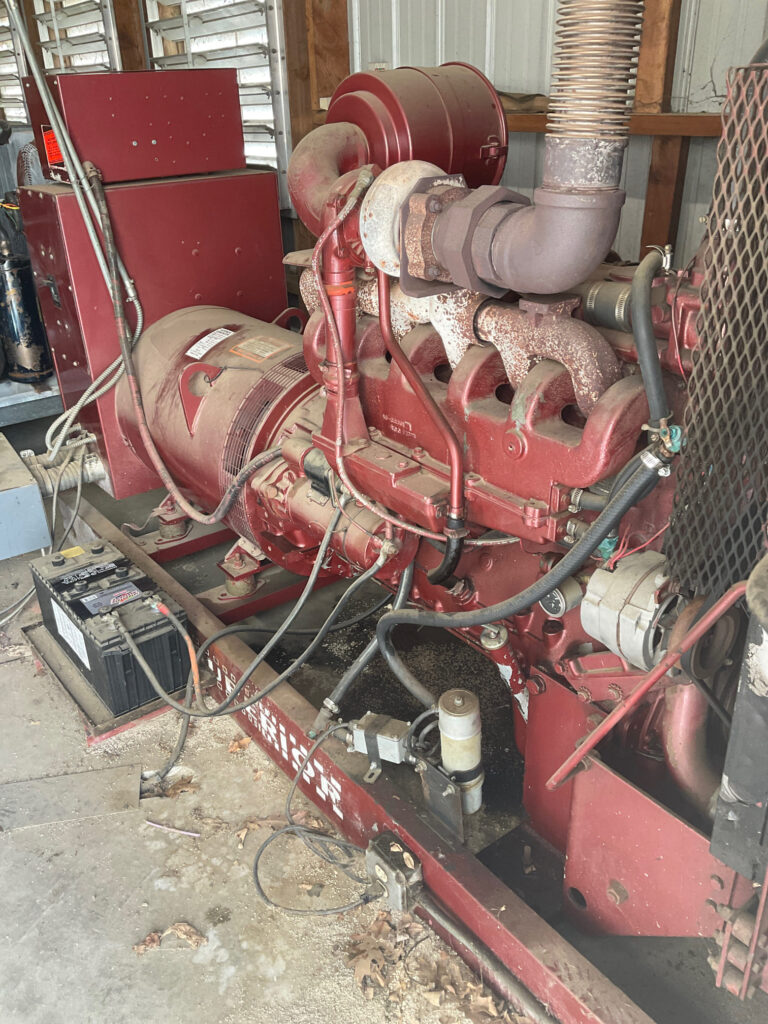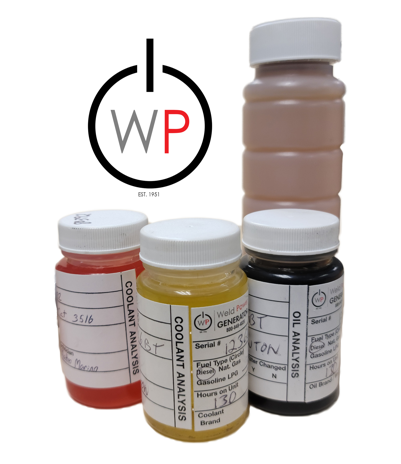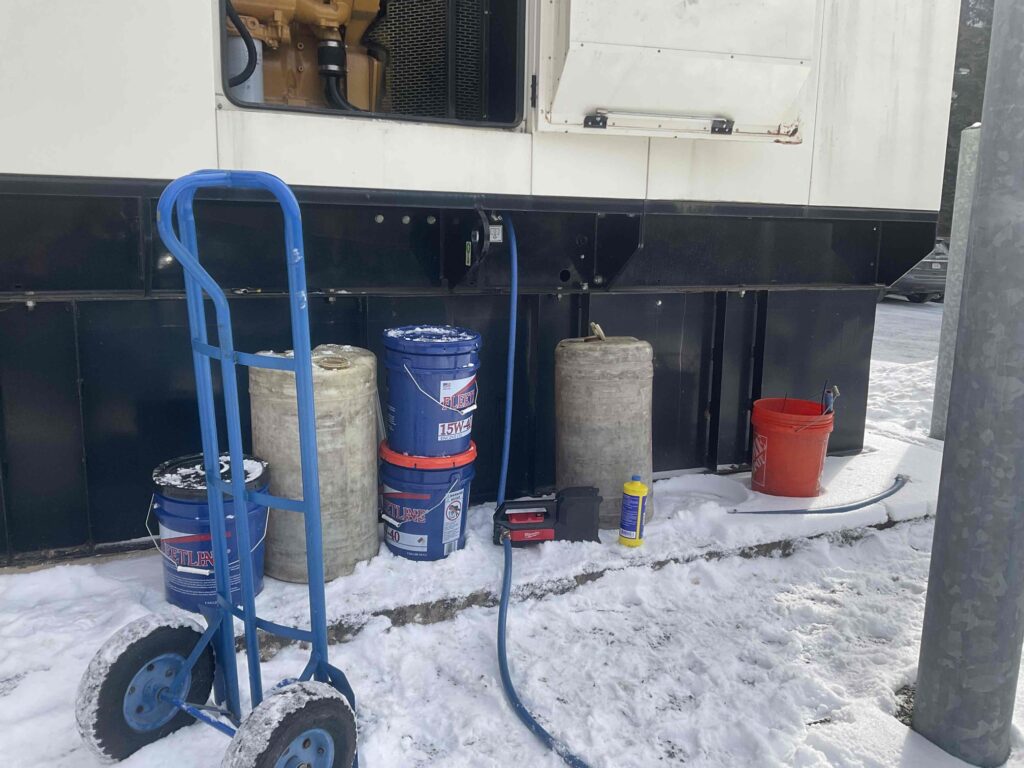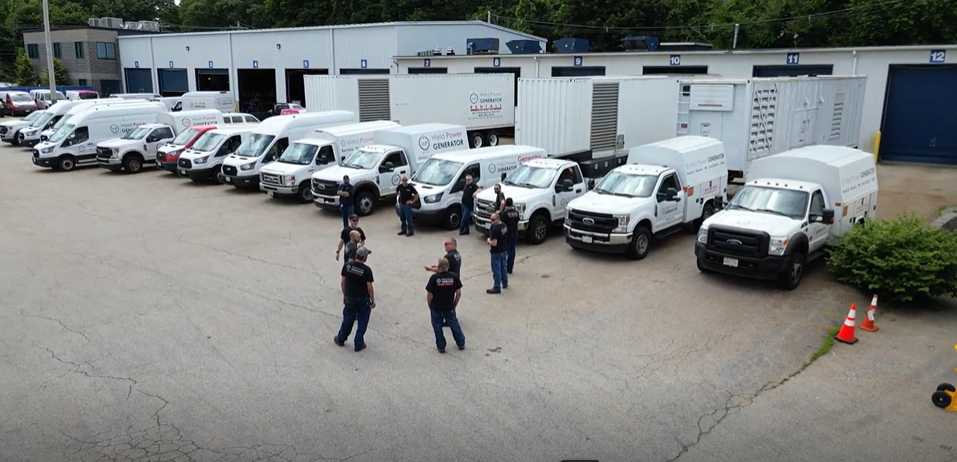Proper Coolant Maintenance: 3 Powerful Tips for Increasing Your Generator’s Reliability

When it comes to ensuring the reliable operation of a commercial generator, many people focus on fuel, batteries, and oil. However, one often overlooked yet critical component is coolant or antifreeze. Proper coolant management is essential for maintaining generator performance, preventing overheating, and avoiding costly repairs.
Table of Contents
The Role of Coolant in Generator Performance
Coolant plays a vital role in maintaining a generator’s optimal operating temperature. Without an effective cooling system, internal engine components could overheat, leading to thermal stress, reduced efficiency, and even catastrophic failure. Coolant serves the following functions:
- Heat Dissipation: It absorbs heat from the engine and transfers it to the radiator, where it is dissipated.
- Corrosion Protection: Modern fluid formulations contain inhibitors that prevent rust and scale buildup inside the cooling system.
- Freeze Protection: Antifreeze lowers the freezing point of the liquid in the system, preventing damage in cold weather conditions.
- Cavitation Prevention: The right fluid mixture helps protect against cavitation, which can erode metal surfaces inside the engine block.

How Coolant Becomes Contaminated
Over time, the fluid can degrade and become contaminated, reducing its effectiveness and potentially leading to engine damage. Some common causes of contamination include:
- Dirt and Debris: Dust, dirt, and rust particles can enter the cooling system, leading to clogging and inefficiencies.
- Chemical Breakdown: Over time, additives that protect against corrosion and cavitation break down, reducing their effectiveness.
- Oil and Fuel Leaks: A compromised gasket or seal can allow oil or fuel to mix with the coolant, leading to sludge formation and decreased heat transfer efficiency.
- Electrolysis: Electrical currents passing through the fluid can lead to metal degradation and contamination, further reducing the lifespan of the cooling system.
- Hard Water Deposits: If water used in coolant mixtures is not properly deionized or distilled, mineral deposits can form, restricting coolant flow and reducing efficiency.

The Importance of Fluid Sampling
Regular fluid sampling and analysis is an essential part of preventative maintenance. Fluid analysis provides valuable insights into the health of the cooling system and can detect early signs of contamination or degradation before they lead to major issues.
Key Parameters Analyzed in Fluid Sampling:
- pH Level: Measures acidity or alkalinity; improper pH can cause corrosion.
- Freeze Point: Ensures proper freeze protection based on environmental conditions.
- Contaminant Levels: Checks for oil, fuel, dirt, and other contaminants.
- Additive Depletion: Determines if corrosion inhibitors have broken down and need replenishment.
- Metal Content: Identifies signs of internal component wear, such as copper or iron particles.
How Often to Perform Coolant Sampling:
- At least once per year for standby generators.
- More frequently for continuously running or high-use generators.
- Whenever coolant-related performance issues arise, such as overheating or leaks.

Coolant Flush
Routine coolant flushes are necessary to remove contaminants and replenish the corrosion inhibitors in the cooling system. Failing to replace degraded fluid can lead to overheating, corrosion, and increased wear on engine components.
Recommended Coolant Flush Intervals:
- The exact frequency depends on the generator manufacturer’s specifications, but a general guideline is to perform a full flush every 2 to 5 years or every 3,000 to 6,000 operating hours.
- High-use generators, especially those in extreme environments, may require more frequent maintenance.
- If fluid analysis reveals significant contamination or chemical degradation, an immediate flush may be necessary, regardless of the standard schedule.
Steps to Flushing a Generator Cooling System:
- Shut Down and Cool the Generator: Ensure the engine is off and cooled down before starting maintenance.
- Drain the Existing Coolant: Open the drain valve and collect the old fluid in a suitable container for proper disposal.
- Flush the System with Clean Water or a Coolant Flush Solution: Run clean water or a specialized flush solution through the system to remove debris and buildup.
- Refill with Fresh Coolant: Use the manufacturer-recommended coolant type and ensure the proper mix of coolant and water
- Bleed the System: Remove air pockets by running the generator briefly and checking the fluid levels afterward.
- Inspect for Leaks: Ensure there are no leaks or weak points in the cooling system before returning the generator to service.

Conclusion
Proper coolant management is crucial for maintaining generator reliability and longevity. By understanding its role, recognizing contamination risks, and following a regular flushing and fluid sampling schedule, businesses can prevent costly breakdowns and maximize equipment lifespan. If you are unsure about your generator’s condition, contact us to schedule a professional fluid analysis and maintenance service for the long term health of your generator.
